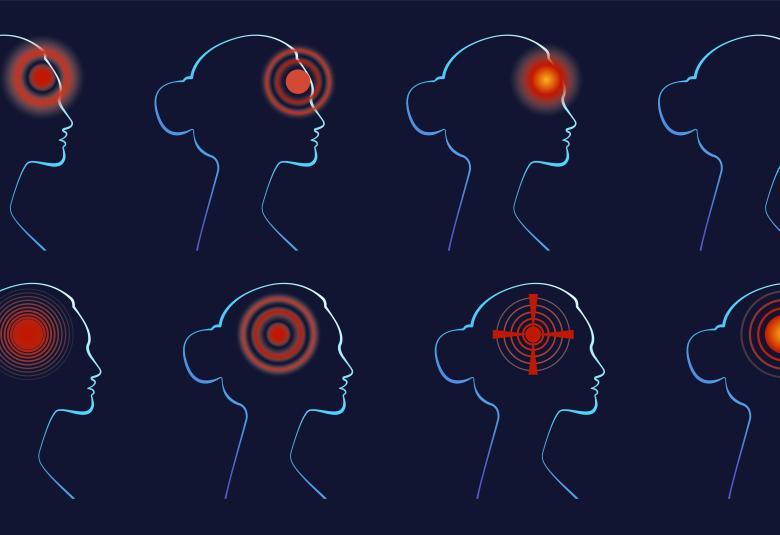Neuropathology, genetics and biology all support the idea that β-amyloid is central to the pathogenesis of Alzheimer’s Disease (AD). Biomarkers suggest that β-amyloid accumulation precedes other disease features, and emerging trial data indicate that therapies directed at the protein can in fact produce cognitive benefit. So the amyloid strategy remains well-founded, Dennis Selkoe argued.
The amyloid hypothesis suggests that AD is caused by a chronic imbalance between the production and clearance of β-amyloid, leading to the accumulation of cytotoxic species in brain areas serving memory and cognition.1
Direct evidence comes from the soluble β-amyloid isolated from patients with AD.2 Amyloid extracted from the post mortem brain can
- decrease memory consolidation when infused into the ventricles of healthy rats
- reduce synaptic plasticity in the hippocampus
- induce neuritic dystrophy in hippocampal neurons and selectively increase tau phosphorylation
- lead to microglial inflammation.2
The picture is somewhat complicated since it seems to be the low molecular weight oligomers/dimers present in soluble brain extracts – rather than the more prevalent high molecular weight species -- that are neurotoxic.3
But the overall picture is clear: β-amyloid causes oxidative injury, long-term synaptic suppression and neuronal loss1, argued Dennis Selkoe (Brigham and Women’s Hospital and Harvard Medical School, USA) in his plenary address.
β-amyloid causes oxidative injury, long-term synaptic suppression in the mouse hippocampus, and neuronal loss
Other sources of evidence
Although generated throughout life, the β-amyloid peptide can in certain circumstances dimerize, form oligomers, and then filaments and fibrils and, finally, plaques. This cascade view of AD pathogenesis is strongly supported by evidence of the family history and genetics of the disease, such as the role of β-amyloid precursor protein (APP).1
Chromosome 21 includes a gene coding for APP, which presumably explains why people with Down’s syndrome develop amyloid plaques and early-onset dementia closely related to AD. Conversely, an APP missense mutation (A673T) reduces accumulation of amyloid and is protective against AD and age-related cognitive decline.4
Mutations in presenilin are strongly associated with AD; and presenilin -- as gamma syncretase -- cleaves APP.
Finally, the ApoE-e4 mutation appears to be a potent risk factor because it reduces amyloid clearance.
The major mutations associated with familial AD all relate to amyloid
So why the controversy?
Dennis Selkoe cited a number of arguments brought to bear against the amyloid hypothesis. Tangle counts may correlate better with cognitive impairment than plaque burden. Some studies suggest that tangles precede plaques. And – perhaps of greater concern -- some people with abundant β-amyloid deposits at death had not noticeably suffered from dementia.
However, Professor Selkoe argued that many of those β-amyloid deposits were of diffuse rather than dense-core morphology, and so of the type less clearly associated with dystrophic neurites, activated microglia and synaptic loss. Secondly, as discussed above, the most potent neurotoxicity is associated with dimeric and oligomeric forms of amyloid rather than insoluble plaques per se.
Thirdly, amyloid pathology seems to be well advanced before even mild cognitive impairment (MCI) becomes evident and may not increase appreciably between then and the terminal phase – in which case the correlation between amyloid burden and symptom severity will be poor.
Of greatest concern, though, is the fact that the amyloid hypothesis seems to have broken its promise of delivering effective treatments – despite extensive clinical trials of agents developed with the aim of targeting amyloid pathology.
Why does the amyloid idea seem to have broken its promise to deliver effective therapy?
Why don’t we have better treatments?
From cause and mechanism on the one hand to effective treatment on the other is not always a straightforward step.
Several agents that have been subjected to clinical trial had inadequate preclinical data, poor brain penetration and a low therapeutic index, Dr Selkoe said.
Further, most patients included in trials had late-mild to moderate AD. Trials conducted at an earlier stage in the disease have shown positive trends; and to have a major impact on the natural history of AD it may be necessary to intervene earlier still if – as suggested by neuropathology, amyloid PET imaging, and low CSF Aβ42 levels – amyloid starts to accumulate years or decades before the appearance of MCI.
The neuronal damage induced by soluble extracts of human AD brain can in some circumstances be prevented by a monoclonal antibody targeting β-amyloid, Dr Selkoe said. And there is also promise in a behavioral approach to modifying AD biology. Eight hours’ daily exposure of wild type mice to a complex environment of novel objects, which changes every day, provides exercise and cognitive enrichment. Such animals have remarkable resistance to β-amyloid.
Dr Selkoe quoted the German philosopher, Arthur Schopenhauer, who said “all truths pass through three stages. First, it is ridiculed. Second, it is violently opposed. Third, it is accepted as being self-evident”.
Advocates of beta-amyloid might agree that it is not yet clear where the hypothesis stands in this process, while its opponents might suggest that it will never achieve the status of “truth”.




